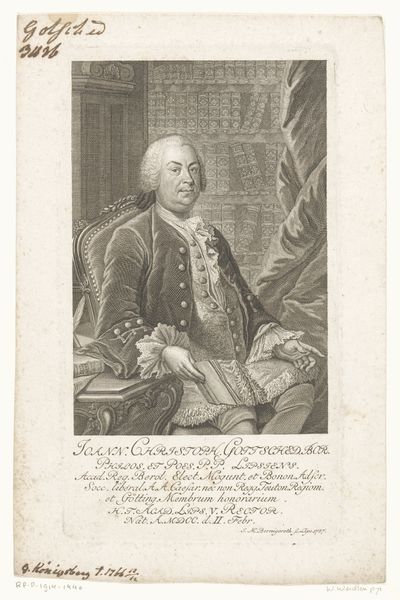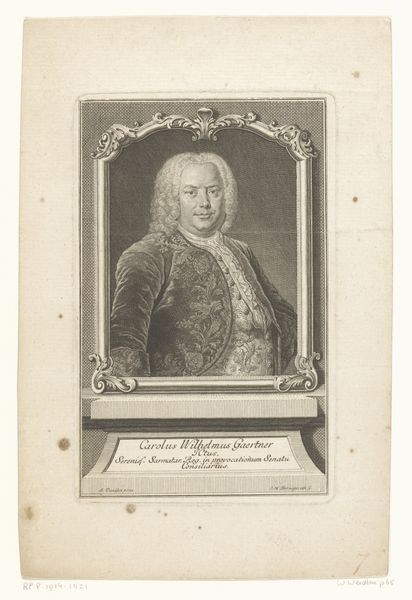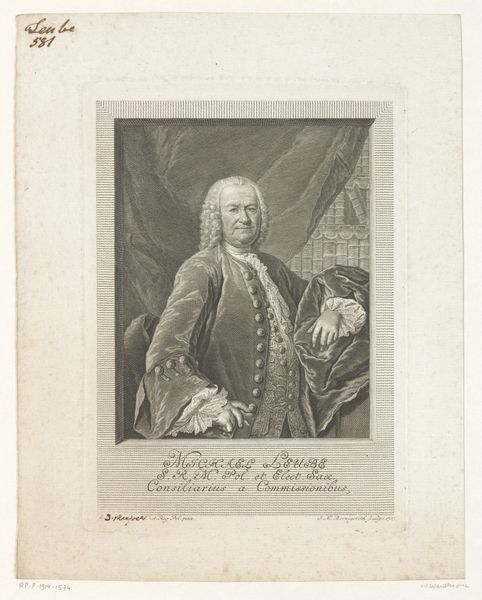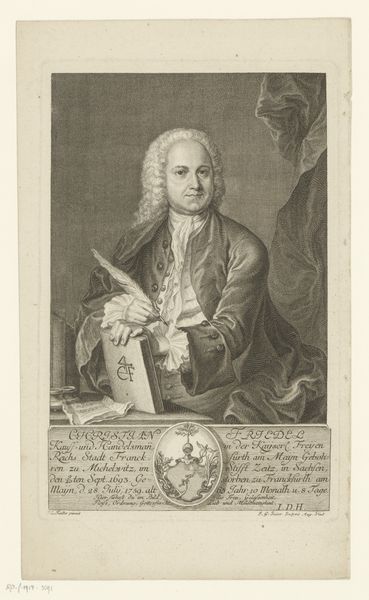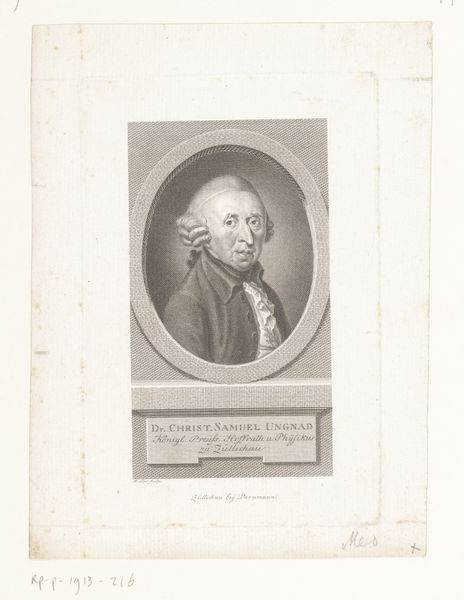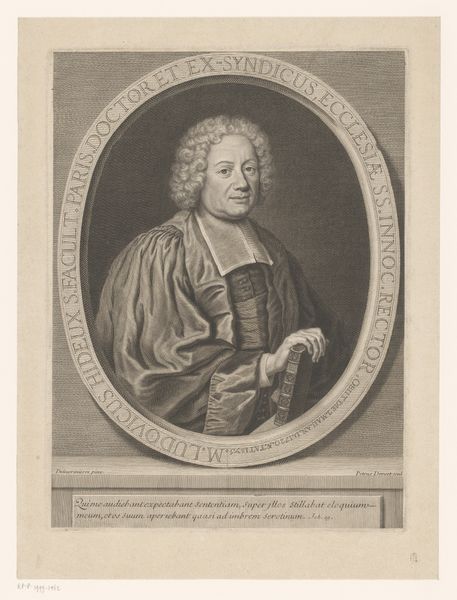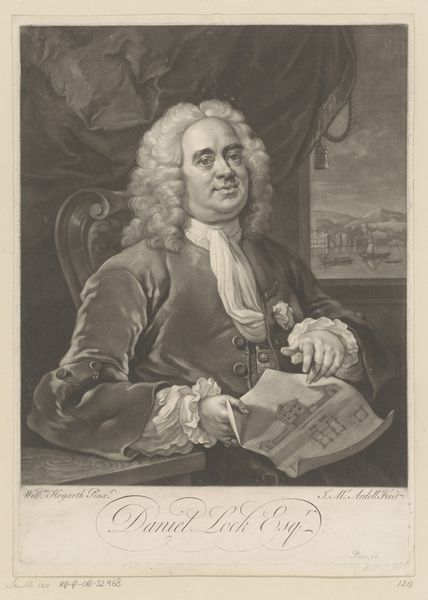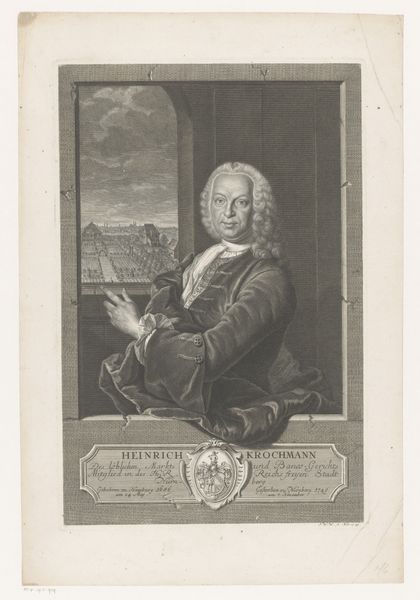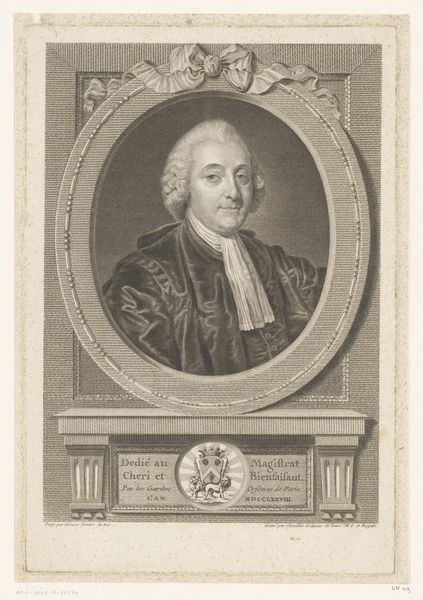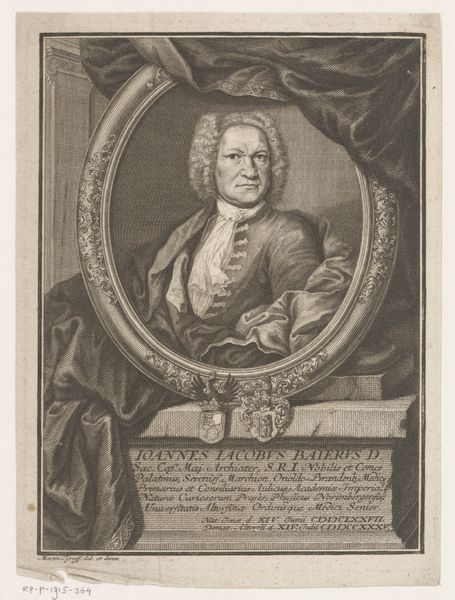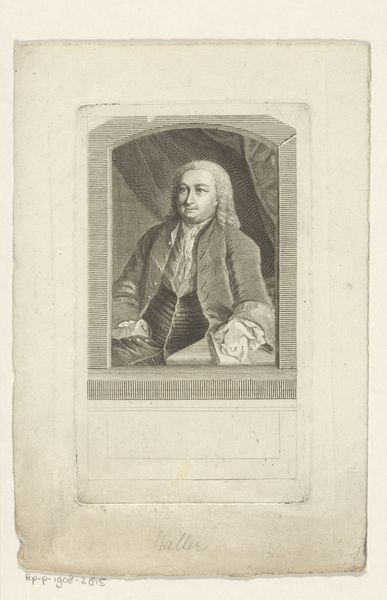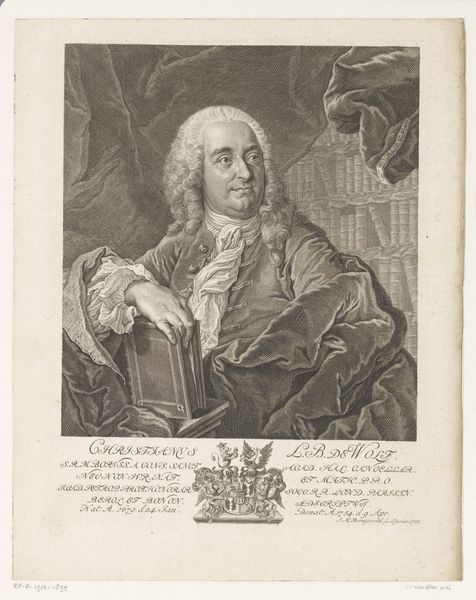
engraving
#
portrait
#
baroque
#
old engraving style
#
19th century
#
portrait drawing
#
history-painting
#
engraving
Dimensions: height 386 mm, width 280 mm
Copyright: Rijks Museum: Open Domain
Curator: This is a portrait engraving of Christoph von Kuntsch. Dating to sometime between 1724 and 1749, the artwork presents a depiction of a learned man in a domestic interior. Editor: My first impression is one of cultivated restraint. It's not overly flamboyant, despite the Baroque period it originates from, there’s a thoughtfulness conveyed in his pose and the arrangement of objects around him. Curator: Indeed. Portraits like these served a very specific purpose for those in positions of power or influence. Displaying ones wealth and character were markers of status, a demonstration of moral authority and refined taste. Editor: Right. I find it striking how his pose projects both intellectual power, due to the book, while also appearing incredibly relaxed and comfortable. The subtle tension there is palpable, highlighting the privileges he possessed, and suggesting that erudition was a pastime available only to the wealthy. Curator: Precisely. Notice the deliberate arrangement of the study around him, complete with meticulously displayed bookshelves. These details were as crucial to conveying his image, solidifying his legacy and defining his role within society as his posture. Engravings like these offered accessibility and expanded representation. Editor: This resonates even more when we look at who is missing from the picture, too. Whose labour and privilege gave him this luxury of contemplation, who did the actual work. Curator: Considering those who were excluded from this representation offers an intriguing point, absolutely. But I also think the detail in the execution shouldn't be ignored. The meticulous hatching and attention to detail is incredible. Editor: Absolutely. It speaks to the social conditions surrounding art and visibility, prompting us to consider who gets to be remembered and in what way. What is captured versus what remains unseen? Curator: Portraits in that period become, by necessity, intensely political works of propaganda for the status quo. Editor: Looking closely allows us to appreciate the artistry as well as question whose stories art most often conveys. Curator: A lens which prompts a richer viewing experience. Editor: Absolutely. The historical background opens space to ask insightful questions and challenges the historical exclusions art may perpetuate.
Comments
No comments
Be the first to comment and join the conversation on the ultimate creative platform.
